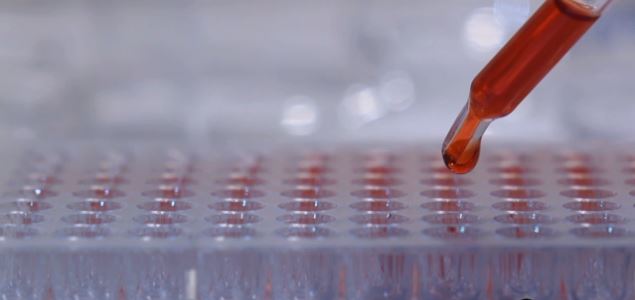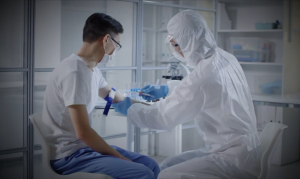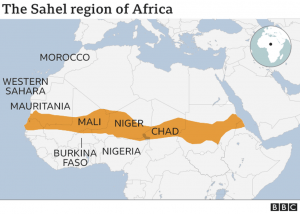
11 April 2020. ABC News: Preliminary findings released this week from a new effort to track the spread of the coronavirus through sewage data suggests that one metro region in Massachusetts that’s reported fewer than 500 positive tests actually may actually have exponentially more.
Last month, Massachusetts lab Biobot Analytics launched a partnership with Harvard University, Massachusetts Institute of Technology and Brigham and Women’s Hospital to use its technology pro bono to map and analyze the spread of the virus through wastewater.
The lab previously has helped U.S. municipalities similarly track the prevalence of opioid use.
The coronavirus mapping campaign represents one of at least two such projects nationwide currently analyzing sewage data for COVID-19.
Earlier this week, researchers at the lab in Somerfield announced initial findings from an unidentified “large metropolitan area” in Massachusetts, over a week in late March, indicating the spread of COVID-19 may be exponentially higher than has been reported.
Based on wastewater data, Biobot gave an estimate of anywhere from 2,300 to over 115,000 infected persons within the area sampled, though only 446 cases in the area had been reported. While the estimate had a very wide range, it was the discovery that there were likely many more infected people than revealed by numbers based on COVID-19 clinical testing alone that set off alarms.
Researchers said that theirs is the first study to estimate the number of people infected with the novel coronavirus based on the levels of SARS-CoV-2 quantified in sewage. The findings were published this week on the online archive medRxiv, which collects reports yet to be certified by peer review.
While the COVID-19 mapping project is new, the science of wastewater epidemiology is well established and peer-reviewed. Its most notable use was the detection in 2013 of a polio outbreak in Israel via wastewater monitoring, prompting a mass vaccination campaign that experts say likely prevented an epidemic. Such technology is now being used by several universities and private labs for monitoring COVID-19.
“The amount of virus we found in wastewater was higher than we expected given the number of clinically confirmed cases in the area that we sampled,” Dr. Eric Alm, Biobot Analytics’s scientific director and a professor at MIT’s Center for Microbiome Informatics and Therapeutics, told Newsweek about the findings. “We still have additional follow up experiments to perform before we can say exactly how many undiagnosed cases there might be, but we believe it could be significantly higher than the number of confirmed cases.”
Last month, Chinese scientists published a research letter in the Journal of the American Medical Association indicating that COVID-19 could be detected in fecal matter.
Experts said that while the science is still evolving, wastewater epidemiology is a promising emerging field in the new age of the pandemic.
“Whether it’s through spit or through feces there’s evidence of the virus through all those excretions, so [you would] definitely expect that some virus could end up in sewage,” said epidemiologist Dr. John Brownstein, chief innovation officer at Boston Children’s Hospital and an ABC News contributor.
Still, he need to find new ways to measure this epidemic has become urgent in recent weeks as the U.S. death tolls climbs.
About 25% of Americans may be asymptomatic carriers, meaning they’re infected but likely will never get tested because they don’t have symptoms, according to Dr. Robert Redfield, director of the Centers of Disease Control and Prevention.
Biobot Analytics executives declined requests to discuss their findings in greater detail, but in an interview earlier in the week, Newsha Ghaeli, Biobot Analytics’ co-founder and president, told ABC News the lab is offering to test and analyze communities’ sewers nationwide.
The lab is currently working with about 100 municipalities, she said.
“This may help us identify when the curve starts to level off, may help us know when it’s appropriate to end quarantine,” Alm told ABC News earlier this week in a phone interview. “It may be difficult to know this, especially if hospitals get overwhelmed.”
The lab sends testing kits and protocols to sewage facilities, which collect 24-hour composite samples and ship them back. The lab’s methodology mirrors that used to test for COVID-19, researchers and independent experts said.
“Our next step to make our COVID-19 case-estimation model more accurate is to model the person-to-person variability in SARS-CoV-2 shedding in stool,” researchers said in the post announcing their preliminary findings.
“It’s a powerful way of studying public health,” said Rolf Halden, director of Center for Environmental Health Engineering at Arizona State University, who conducts similar research but is not involved in the Biobot Analytics project. Like Biobot Analytics, Halden’s team was using wastewater analysis technology to track opioid use in communities around the country before the pandemic commandeered his team’s focus.
Halden said that although the technology requires further innovation to increase precision, currently it can paint a broad picture “qualitatively, on the presence or absence of a virus in a given community — and that alone would be so much more than what we have in large stretches of the country, where the tests are not yet available.”
Halden said the process essentially identifies a genetic name tag for the virus and estimates the given density of infection in a community.
“In essence, we’re looking for a package of genetic material,” Halden said. “You can compare it to like a license plate of a car. The car is the virus, and the license plate is the genetic blueprint. And now what we’re doing with these methods — they’re called quantitative PCR, polymerase chain reaction — is they allow us … to see a small signal and magnify it so that it gets bigger, and then we can, you know, count it. So, essentially, we are at the window, watching with smooth binoculars, on a busy street, looking for license plates.”
But, he said, there is much that wastewater-focused epidemiologists still don’t know, describing the group’s preliminary findings as a strong but still-evolving “guess.”
“There’s very little information right now and with the [little] data we have, we don’t know whether they are representative for all age groups, right for all sexes, and for all types of how the disease is unfolding in the individual,” he added.
Ultimately, Brownstein concluded, the Biobot Analytics project may prove more valuable ahead of the next pandemic.
“It could be an interesting tool, especially to track future outbreaks,” he said. But now that we have such broad transmission across the country, that utility probably starts to go down “for the existing coronavirus crisis.”




